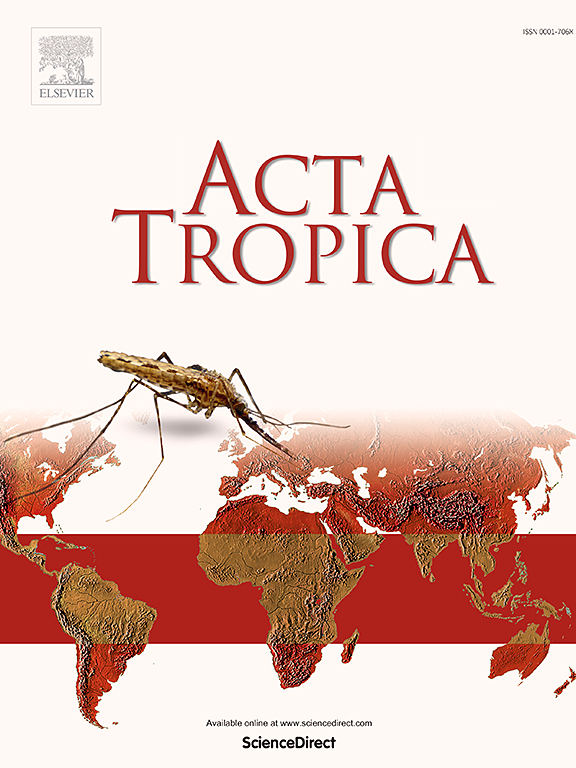A systematic literature review of the efficacy of acaricidal plants, plant extracts, and tick assays used against dog-associated ticks
IF 2.1
3区 医学
Q2 PARASITOLOGY
引用次数: 0
Abstract
Dogs are an integral part of many households and important companion animals to humans. Their inquisitive and exploratory behaviour leads them to roam natural environments, making them susceptible to tick infestations that can also be transmitted to humans. To control these ticks, various plant extracts have been evaluated for their efficacy as acaricides and/or repellents against various species. This study was aimed at consolidating the data that has been published in terms of the plant species that have shown efficacy against ticks that parasitize dogs, it further evaluated the methods used in preparing these formulations. A keyword-Boolean strategy was created to extract a total of n = 103 articles that were included in the study. The leading countries in terms of the global distribution of acaricidal plant investigation outputs were Brazil at 23 %, India at 17 % and Turkey at 7 %. A total of n = 13 tick species were used in the evaluated studies. The dog tick Rhipicephalus sanguineus was the most widely used for efficacy testing at 43 % frequency. The Lamiaceae plant family had the highest frequency for reported use across the evaluated studies at 18 %, this was followed by the family Asteraceae at 11 %. Adult immersion test, larval packet test and larval immersion test were the most preferred assays for acaricidal efficacy studies. Leaves were the most preferred plant parts utilized for crude plant metabolites extraction (n = 43), while essential oils were the most highly reported extracts (n = 60). Lastly, extracts were primarily subjected to Gas chromatography for analysis of the plant compounds (n = 38). This paper gives the current global status of potential acaricidal plants utilized against ticks parasitizing dogs.
系统文献综述杀螨植物、植物提取物和蜱虫测定法对狗相关蜱虫的功效。
狗是许多家庭不可或缺的一部分,也是人类重要的伴侣动物。它们的好奇和探索行为使它们在自然环境中漫游,使它们容易受到蜱虫的感染,这种感染也会传染给人类。为了控制这些蜱虫,人们对各种植物提取物作为杀螨剂和/或驱虫剂的功效进行了评估。本研究旨在巩固已发表的关于植物物种对寄生在狗身上的蜱虫有效的数据,并进一步评估这些配方中使用的方法。创建了一个关键字布尔策略来提取研究中包含的总共n = 103篇文章。在杀螨植物调查产出的全球分布方面,巴西占23%,印度占17%,土耳其占7%。评价研究共使用蜱种n = 13种。狗蜱是最广泛用于功效测试的蜱,频率为43%。在评估的研究中,Lamiaceae植物家族的报告使用频率最高,为18%,其次是Asteraceae,为11%。成虫浸泡试验、幼虫包袋试验和幼虫浸泡试验是杀螨效果研究的首选方法。叶片是提取粗代谢物的首选植物部位(n = 43),而精油是报道最多的提取物(n = 60)。最后,提取液主要进行气相色谱法分析植物化合物(n = 38)。本文介绍了目前世界上用于防治蜱寄生犬的潜在杀螨植物的现状。
本文章由计算机程序翻译,如有差异,请以英文原文为准。
求助全文
约1分钟内获得全文
求助全文
来源期刊

Acta tropica
医学-寄生虫学
CiteScore
5.40
自引率
11.10%
发文量
383
审稿时长
37 days
期刊介绍:
Acta Tropica, is an international journal on infectious diseases that covers public health sciences and biomedical research with particular emphasis on topics relevant to human and animal health in the tropics and the subtropics.
 求助内容:
求助内容: 应助结果提醒方式:
应助结果提醒方式:


